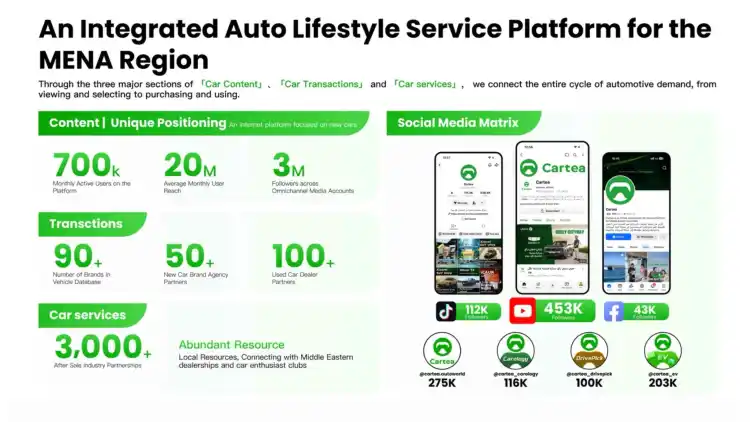- UAE Leads the World in Chinese Car Imports
- Saudi Arabia Emerging as a Fast Growing Market
- UAE vs Saudi Arabia
- Mexico and Russia Between Growth and Decline
- Europe and Asia as New Growth Engines for Chinese Exports
- China’s New Export Licensing System and Its Impact on the GCC
- Future Outlook
From January to July 2025, Chinese car exports witnessed major shifts that reshaped the balance of global markets. The UAE jumped to the top as the world’s largest importer with 255,489 cars (+54.5% year on year), while Saudi Arabia strengthened its position with 138,527 cars (+24.4%). In contrast, Russia recorded a steep decline, while Asian and European markets emerged as new growth engines.
UAE Leads the World in Chinese Car Imports

How did the UAE secure its top position in 2025?
Total imports: 255,489 cars (+54.5%).
July alone: 42,213 cars.
New energy vehicle imports: 54,568 units (+30.7%).

Beyond being a massive consumer market, the UAE signed a landmark agreement in June 2025 to establish the first regional factory for electric vehicle charging equipment in the Middle East, through a partnership between TellusPower Group, BinHendi Group, and SFE Group. This move positioned the UAE not only as a leading buyer but also as a strategic regional hub for the EV industry.
Saudi Arabia Emerging as a Fast Growing Market

Why is China turning to the Kingdom?
Total imports: 138,527 cars (+24.4%).
July alone: 19,509 cars.
BYDEgypt BYDKSA BYDUAE BYDBahrain BYDKuwait BYDOman BYDQatar BYD officially entered the market with 3 showrooms and plans to expand to 10 by 2026.
Saudi Arabia is positioning itself as a strategic gateway for Chinese exports into the GCC. Vision 2030 and the government’s support for clean energy projects have created an ideal environment for the growth of electric vehicles. With the expansion of charging networks and dealerships, the market is expected to surpass 230,000 cars by the end of 2025.
UAE vs Saudi Arabia

Which market is closer to regional leadership?
UAE: 255,489 cars, global leadership with advanced infrastructure projects.
Saudi Arabia: 138,527 cars, rapid expansion with long term growth plans.
UAE: 54,568 new energy vehicles, a central hub for the EV transition.
Saudi Arabia: an emerging EV market with BYD’s growing presence.
Today, the UAE holds the top global position, while Saudi Arabia is steadily advancing to become the most influential GCC market in the coming years.
Mexico and Russia Between Growth and Decline

How did the two markets differ?
Mexico: 254,639 cars (+18.1%), including 92,268 new energy vehicles (+108.2%).
Russia: 215,452 cars (-57.3%), despite recording 45,206 units in July alone.
While Mexico continues to strengthen its role as a gateway to Latin America, Russia faces a historic downturn that has pushed China to diversify its exports toward the GCC and Central Asia.
Europe and Asia as New Growth Engines for Chinese Exports

What role do emerging markets play in supporting exports?
Belgium: 178,822 cars, including 172,363 new energy vehicles (+13.3%).
United Kingdom: 111,781 electric cars (+35.6%) with government subsidies of up to £3,750 per vehicle.
Kazakhstan: 96,393 cars (+100.5%), the fastest-growing market worldwide.
Malaysia: 90,132 cars (+49.6%).
Indonesia: 52,237 cars (+116.6%).
These emerging markets have become key drivers of China’s export strategy under the Belt and Road Initiative.
China’s New Export Licensing System and Its Impact on the GCC

What does the 2026 policy mean?
Starting January 1, 2026, no electric vehicle will be exported from China without an official license.
Purpose: to ensure quality, prevent dumping, and strengthen the role of major automakers like BYD, GeelyUAE GeelyKSA GeelyKuwait GeelyQatar GeelyBahrain GeelyEgypt GeelyOman Geely, CheryBahrain CheryKSA CheryQatar CheryOman CheryUAE CheryKuwait CheryEgypt Chery, and SAIC.
Result: restrictions on parallel imports through independent dealerships and more power for official distributors.

Impact on the GCC:
Saudi Arabia: the decision aligns with national regulations and limits unofficial imports.
UAE: the large parallel market in Dubai and Sharjah will shrink, pushing smaller showrooms to seek direct partnerships with Chinese brands.
Prices: in the short term, a slight increase is expected, but in the long run quality will stabilize and consumer trust will grow.
Future Outlook

Where is the GCC market heading?
UAE is expected to maintain its global leadership.
Saudi Arabia could surpass 230,000 units in 2025 with rapid expansion.
Mexico may slow down with new tariffs in 2026.
Europe will remain a key hub for new energy vehicles.
Asian markets will continue driving accelerated growth.

The GCC is entering a new phase of restructuring where parallel imports will decline and official distributors will gain dominance. Over time, consumers will benefit from higher quality standards and stronger trust in officially imported Chinese vehicles, making the region a cornerstone of China’s global export strategy.












